By Beverly C. Tyler
For over 8,000 years, indigenous people, Long Island’s original settlers, have lived here. Today Native Americans still live in Brookhaven, where their ancestors settled in coastal villages.
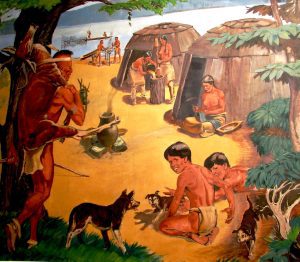
Courtesy of TVHS
According to what we know today, the first settlers reached North America at least 13,200 years ago, possibly coming across the land bridge from Asia to Alaska; these Asiatic people were the first humans on the continent. However, there are now a few other sites in North and South America, including one near Pittsburgh, PA that indicate that humans were here earlier.
Some of the earliest North Americans are called Clovis people. Clovis refers to the Clovis Point that was used as a spear point to hunt and kill the elephant-like Mammoths and Mastodons that populated North America at that time. The Clovis point is unique to North America. It, apparently, was not developed until humans crossed into North America. During a 300 year period Clovis people spread all over North America, including Long Island, and hunted the Mastodon and Mammoth to extinction. The Clovis culture existed from about 13,200 to 12,900 BP (Before Present), coming to an end at the same time that the last Mammoth disappeared from North America. A number of Clovis points have been found on Long Island.
There are three recognized periods of Native American culture. The earliest is Paleo-lndian culture. Paleo means “of ancient origin” (Webster’s New International Dictionary). This period extends from about 12,500 to 8,000 BP. The second period is called Archaic culture. This is the hunting & gathering period which extends from about 8,000 to 3,000 BP. The third period is called Woodland Culture, the period when Native Americans first practiced agriculture and provided the first indication of the use of clay pottery.This period extends from about 3,000 to 1,000 BP.
The period that ended the isolation of Long Island Indians is called Late Woodland culture. This second part of the Woodland period extends from about 1,000 to the calendar year 1600. Native Americans reached their highest level of art and culture during this period, which also includes the first contact with European explorers, hunters, trappers and settlers.
First residents
We don’t know all the details about life on Long Island before the Europeans came because the people living here did not leave us a written or photographic record of their lives.
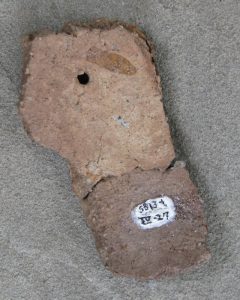
Archaeological excavations have given us most of the details of how people lived in this area as early as 5,000 years ago. One of the most famous sites in New York State was a shell midden, along Aunt Amy’s Creek, named The Stony Brook Site, excavated by State Archaeologist William Richie, in 1955. From archaeological digs by Richie and others, we know that between 5,000 to 3,000 years ago, the native people were hunters and gatherers, dependent upon hunting local animals and gathering plants, stones and clay for food, shelter, tools, clothes and medicines.
The Fischetti Site is a prehistoric Native American site that was discovered during a cultural resource investigation (evaluating the building sites to see what, if anything, is there that might be of cultural/historical significance) of a proposed residential development in November of 1980. Salvage excavations (a more intensive archaeological dig because of the press of time) continued through October of 1981.
Artifacts from the Fischetti site in Setauket, along West Meadow Creek, are from what appears to have been a site for manufacturing stone tools and spear points.
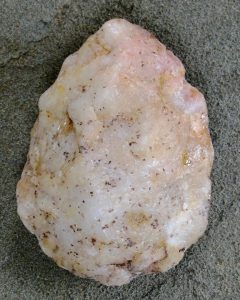
The site was probably selected by the Native Americans due to the availability of drinking water and food and shelter from the elements. It was occupied by Algonquin Indians about (circa) 3300-1000 B.P. We know the Algonquian used this location then because of the type of arrow and spear points and blades recovered. The major activity here, on the edge of Stony Brook creek, was making stone tools. We know this by the large quantities of stone flakes and roughed-out stones. Although native Long Island quartz was utilized, some flints (darker, almost black in color) from upper New York State and Connecticut were recovered, indicating some trading with other native groups.
The almost total absence of food remains at the site shows that this was not the location of a village. However, a village site–The Stony Brook site–existed approximately 700 meters (765 yards) to the south, along what is now known as Aunt Amy’s Creek, during the same time period.
This stone tool manufacturing site (Fischetti Site) was an area separated from the village, since the making of stone implements involved the hazardous work of chipping stone, resulting in flakes of sharp stone pieces flying all over the area. This area was still in use by Woodland Native Americans (circa 3000 B.P . To 1600) as pieces of clay pottery appear in the upper layers of the site. (From a report by Edward J. Johannemann and Laurie S. Billadello-Long Island Archaeological Project)
The artifacts taken from the Fischetti Site are part of the collection of the Three Village Historical Society. Artifacts from the Richie Site are a part of the collection of the New York State Museum.
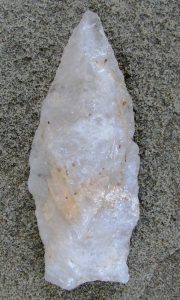
For thousands of years the Indians used natural resources, wood, stone and animals, to make their housing, tools and clothing. About 3,000 years ago, their way of life changed with the introduction of three things: pottery, the bow and arrow and horticulture. Like the earlier American Indians, the Woodland Indians continued to rely on natural resources.
Vance Locke pictures a Setalcott village along the shoreline of Setauket in what archaeologists call the Late Woodland Period from about 1,000 years ago to about the year 1600.
There is a hunter, a woman making wampum and women grinding corn. Men are smoking fish and spearing fish from a trap. There are many other details in this scene that can be observed. The Setalcotts relied on the use of local trees and plants in their daily lives. Many of the native trees and plants can be found along the nature trails in the Frank Melville Memorial Park and Sanctuary in Setauket. Many are listed in the book Native and Near Native by Albert Hostek.
It is important for me (personally) to say, “I wish to acknowledge that I am sitting on the land of the Setalcott Indigenous people in Setauket and I pay respect to the Setalcott people whose land is where I live.”
Beverly C. Tyler is Three Village Historical Society historian and author of books available from the Three Village Historical Society, 93 North Country Rd., Setauket, NY 11733. Tel: 631-751-3730. WWW.TVHS.org

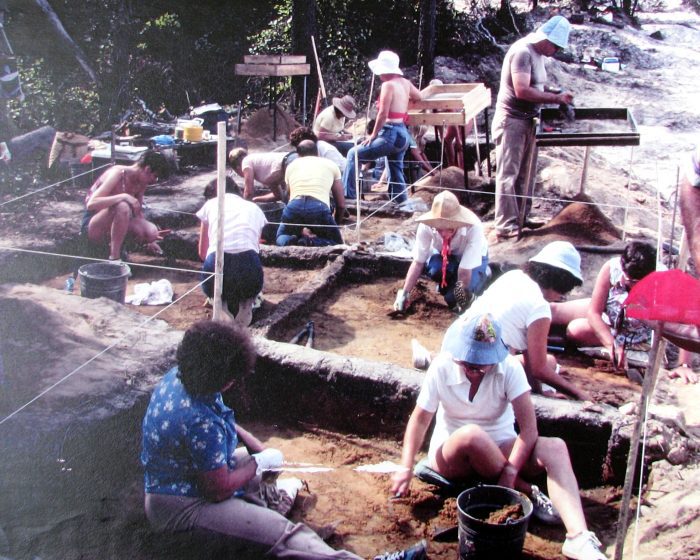
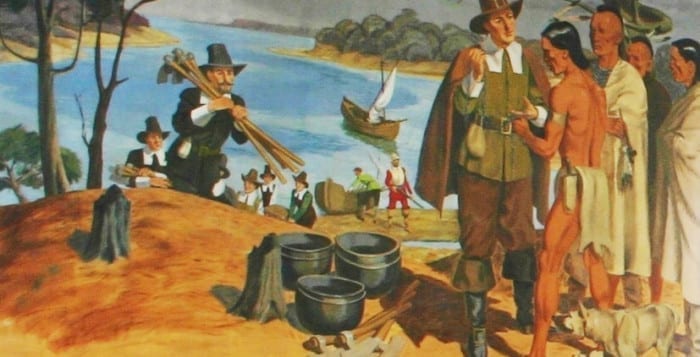

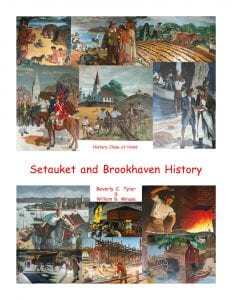 The murals, along with archaeological studies, have helped piece together the evolution of the changing lives on Long Island. Tyler presents how and when the facts were discovered. The murals progress through time, highlighting farming and millwork, the blacksmith and the shipwright. There is the cutting of ice and the mercantile and the purchase of land. The last is appropriately followed by an explanation that the Setalcotts did not share the same view of land ownership proffered by the English settlers.
The murals, along with archaeological studies, have helped piece together the evolution of the changing lives on Long Island. Tyler presents how and when the facts were discovered. The murals progress through time, highlighting farming and millwork, the blacksmith and the shipwright. There is the cutting of ice and the mercantile and the purchase of land. The last is appropriately followed by an explanation that the Setalcotts did not share the same view of land ownership proffered by the English settlers.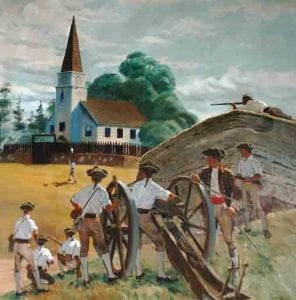 Tyler uses both primary and secondary sources to enrich his telling of the story, shedding light on the challenges and sacrifices, the humanity and the intrigue. It is appropriately thorough but equally succinct.
Tyler uses both primary and secondary sources to enrich his telling of the story, shedding light on the challenges and sacrifices, the humanity and the intrigue. It is appropriately thorough but equally succinct.


